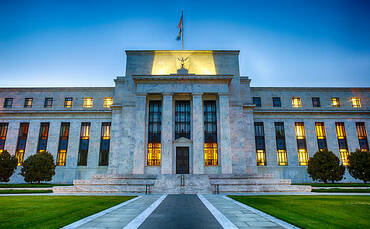After a two-day meeting, the Fed declared that its federal funds rate would be held in the 5.25 and 5.5% range, the same level as when it last increased rates in July.
Rates have risen 11 times since March 2022 from near zero, but yesterday's (20 September) decision marked the second time this year that the Fed left interest rates unchanged to evaluate the effects of prior hikes on inflation and the overall economy.
US unemployment ticks up in August to 3.8%
Fed chair Jerome Powell said in his Federal Open Market Committee statement: "Recent indicators suggest that economic activity has been expanding at a solid pace. Job gains have slowed in recent months but remain strong, and the unemployment rate has remained low."
Powell also noted that inflation remained "elevated". Inflation has fallen sharply from an annual rate of 9.1% last June to 3.7% in August, but the rate of inflation remains well above the Fed's target of 2%.
"The committee would be prepared to adjust the stance of monetary policy as appropriate if risks emerge that could impede the attainment of the committee's goals," he said.
In a press conference, Powell explained he still believed the US could achieve a "soft landing", noting he had "always thought that the soft landing was a plausible outcome".
Jackson Hole: Analysts expect hawkish Fed with no major tone shift
Alexandra Wilson-Elizondo, deputy CIO for multi-asset strategies at Goldman Sachs Asset Management, said the release was "more hawkish than expected".
"While a share of past policy tightening is still in the pipeline, the Fed can go into wait and see mode, hence the pause," she said.
Seema Shah, chief global strategist at Principal Asset Management, said the hawkish pause and "lingering threat" of a November hike "should not be a surprise to anyone". However, she noted that it is the 2024 projections "where all the fun resides".
"The new projections suggest that the Fed has a fairly strong degree of confidence in its outlook for a soft landing and, in turn, that there will be very minimal space for policy easing next year," she said.
"The dot plot for next year has certainly rammed home the message of higher for longer and reflects the continued wariness and fear of an inflation resurgence if it takes the foot off the brake too soon and too quickly."
US stocks tumble after hawkish Fed minutes signal rate rises
Daniele Antonucci, CIO at Quinet Private Bank, added we are approaching peak rates. After that, he said he expected a long pause, but no rate cuts in the near term.
"There is evidence that higher interest rates are having their intended impact: inflation is falling, especially in the US, and activity is slowing, though the US economy has proven to be more resilient than expected," he said.
"This relative economic resilience, and the fact that the inflation battle is not fully won, is why we think a peak in rates will probably be followed by central banks keeping rates elevated over the coming months."


